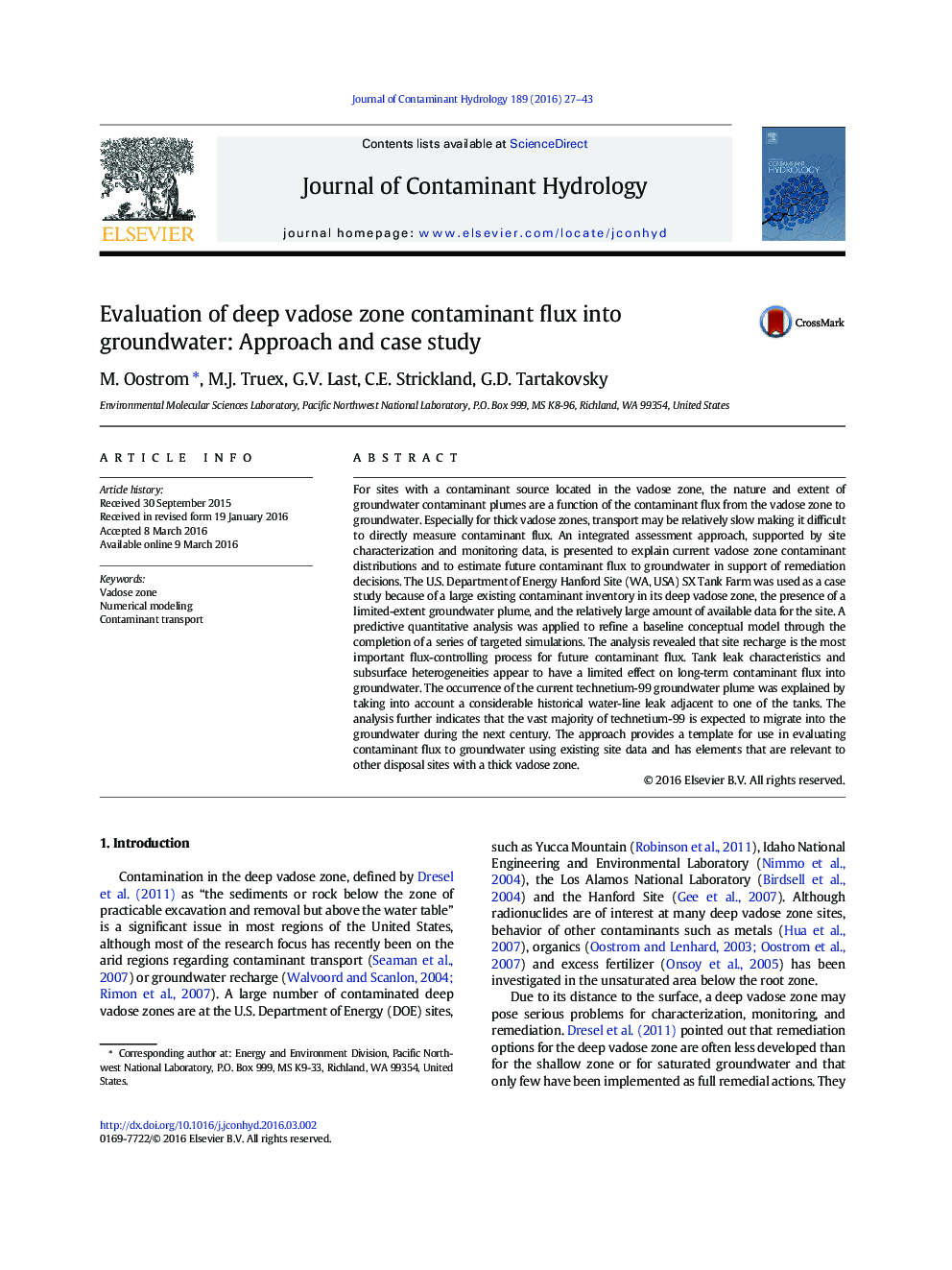| Article ID | Journal | Published Year | Pages | File Type |
|---|---|---|---|---|
| 4546392 | Journal of Contaminant Hydrology | 2016 | 17 Pages |
•An integrated assessment approach is presented to explain current vadose zone contaminant distributions.•The assessment can be used to estimate future contaminant flux to groundwater.•At the Hanford SX Tank Farm, recharge is the dominant flux-controlling process.•Tank leak characteristics, heterogeneities, and hydraulic properties have a minimal impact on vadose zone transport.•The vast majority of Tc-99 is expected to migrate into the groundwater during the next century.
For sites with a contaminant source located in the vadose zone, the nature and extent of groundwater contaminant plumes are a function of the contaminant flux from the vadose zone to groundwater. Especially for thick vadose zones, transport may be relatively slow making it difficult to directly measure contaminant flux. An integrated assessment approach, supported by site characterization and monitoring data, is presented to explain current vadose zone contaminant distributions and to estimate future contaminant flux to groundwater in support of remediation decisions. The U.S. Department of Energy Hanford Site (WA, USA) SX Tank Farm was used as a case study because of a large existing contaminant inventory in its deep vadose zone, the presence of a limited-extent groundwater plume, and the relatively large amount of available data for the site. A predictive quantitative analysis was applied to refine a baseline conceptual model through the completion of a series of targeted simulations. The analysis revealed that site recharge is the most important flux-controlling process for future contaminant flux. Tank leak characteristics and subsurface heterogeneities appear to have a limited effect on long-term contaminant flux into groundwater. The occurrence of the current technetium-99 groundwater plume was explained by taking into account a considerable historical water-line leak adjacent to one of the tanks. The analysis further indicates that the vast majority of technetium-99 is expected to migrate into the groundwater during the next century. The approach provides a template for use in evaluating contaminant flux to groundwater using existing site data and has elements that are relevant to other disposal sites with a thick vadose zone.
